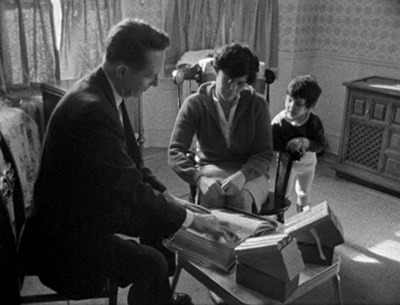I used to be watching a documentary the opposite night time—I’m not going to say which one right here, as a result of it was good and clever general, and the filmmakers is perhaps studying this—and received aggravated instantly as a result of it was steeped in the identical storytelling cliches as so many different documentaries made these days.
It began with a kind of compressed, trailer-like abstract of the whole operating time of the factor I hadn’t watched but, then lower to credit, then reintroduced the primary topic in the midst of a present challenge/mission/endeavor earlier than flashing again to the start and shifting by means of their life chronologically. Alongside the way in which, there have been little sections that felt just like the musical montages in a Hollywood characteristic that dash by means of chronology to get to the subsequent huge second. There was an “mockingly humorous” montage scored with a pop tune that appeared to make enjoyable of one of many major topics somewhat bit. The interviewees have been all sitting in chairs, like in a TV newsmagazine section. They weren’t allowed to talk for various seconds at a time earlier than the film lower to another picture or piece of footage.
The factor didn’t breathe. It couldn’t as a result of it was dancing as quick because it might.
It made me want, for in all probability the zillionth time in latest many years, that we might have extra work within the vein of cinema verite or “direct cinema” that was so omnipresent from the early Nineteen Sixties by means of the ’80s. Then, it was thought-about adequate for a documentary to choose an fascinating topic and/or folks and hang around with them for a bit, reasonably than always contriving and laboring to entertain—and within the course of, borrowing a number of the identical strategies from industrial fiction movies that documentarians have been as soon as rightly suspicious of.
Nonfiction filmmakers don’t all secretly want they have been making scripted films with actors, however the cliches typically make it really feel as if they’re. A film the place a factor is stolen tends to be offered as if it have been a heist film. A musical documentary about an artist’s rise and fall is structured kind of like a Hollywood biopic and falls again on inspirational cliches about survival and perseverance. In so doing, it glances over the extra unsavory issues within the topic’s previous. (That’s in all probability since you want music rights to make a music documentary, movie rights to make a documentary a couple of filmmaker, and literary rights to excerpt textual content from a writer-philosopher like James Baldwin and have any person converse it in a brand new context, and the household tends to manage all that.) The purpose is not to seize and even signify actuality however to recontextualize it as a narrative or, extra particularly, as leisure. A gripping narrative. A humdinger.
I feel we as a tradition of filmmakers, movie critics, and movie viewers have to get again to the Maysles Brothers and different filmmakers of their period—pre-Web, pre-cable tv—and reconnect with the concept that the documentary mode of filmmaking within the center a part of the twentieth century—the purest, most uncompromising interval, to my eyes—was primarily about, effectively, documenting stuff. : seeing, observing, reporting, presenting. Making y0u really feel such as you’re there.
Most of the biggest works of nonfiction cinema from that interval are revered primarily as a result of they focus on that and don’t get so hung up on giving all the pieces a propulsive momentum and a Hollywood feature-like presentation. The latter mindset is why so many nonfiction movies about sports activities groups or particular person athletes construct towards an enormous recreation, match, or hoped-for comeback (it’s a sports activities film, however actual!). It’s why so many authorized documentaries begin with the crime or offense and take you thru the method till a ultimate verdict is delivered (it’s like a courtroom thriller, however it’s actual!) after which finish. It’s why many navy or warfare documentaries are a couple of specific mission (it’s like a fight film, however actual!) and wrap up after the mission is accomplished, pending one or two closing ideas from now-old troopers. Most of those films have what screenwriting instructors would name a three-act construction. Even in the event you don’t know what’s going to occur subsequent, you possibly can guess, since you’ve spent a lifetime watching Hollywood films.
This invitations the query (OK, it’s simply me asking the query): If nonfiction movies are decided to look, really feel, and transfer like fiction, what’s the purpose of nonfiction filmmaking? Why not simply learn a ebook, a PDF, or a set of Wikipedia pages?
It didn’t was like this.
The primary documentary I noticed that made an impression on me and made me take into consideration the distinction between fiction and nonfiction was “Gimme Shelter,” the film in regards to the Rolling Stones live performance on the Altamont Speedway in 1969 that ended with a homicide. Administrators Albert and David Maysles and editor Charlotte Zwerin framed the story round Mick Jagger visiting the enhancing room and reacting to the challenge being put collectively. The homicide was replayed on the enhancing desk (this was the times when documentaries have been shot on 16mm movie!) by operating the footage ahead and backward and freeze-framing it, just like the Zapruder movie of Kennedy’s assassination. Jagger’s reactions to the tragedy, the filmmakers’ emotions of complicity, and the bigger societal context for these giant and chaotic gatherings of youth tradition have been the film’s details.
I branched out into different works by individuals who have been main gamers within the so-called “direct cinema” motion based by Robert Drew, who did two nice documentaries about John F. Kennedy, “Main” (which is about what you assume it’s about—the gears of the electoral machine) and “Disaster,” which allowed Drew into the Oval Workplace throughout the Cuban Missile Disaster.
It’s fascinating now to contemplate that this era of nonfiction filmmaking was a response to the way in which issues had been accomplished from the silent period, when there was much more fudging of occasions and particulars, and a few straight-up dramatizing and inventing. Robert Flaherty’s “Nanook of the North” and “Louisiana Story” and different notable nonfiction works fr0m the primary half of the twentieth century have been the primary nonfiction movies to be taken severely on a big scale by audiences and the press. However substantial parts of them have been devised from complete fabric—scripted, you may say.
And the insistence on Hollywood characteristic movie high quality photos and sound closed off the opportunity of simply gathering up a pair baggage of kit on a whim and touring mild, as they are saying, to regardless of the location occurred to be. Drew, who I profiled over 20 years in the past, instructed me that he constructed the primary handheld 16mm digital camera sync-sound digital camera (with recommendation and assist from fellow documentarians) as a result of he needed to make it simpler and cheaper to make nonfiction, and make the topics really feel extra relaxed than they might if the have been staring into an enormous digital camera below scorching lights whereas surrounded by a big crew.
Drew and his contemporaries, together with the Maysles, Zwerin, Shirley Clarke, and D.A. Pennebaker and his collaborator and common co-cameraman Richard Leacock (“Don’t Look Again,” “Monterey Pop”) did all the pieces they might to convey filmmaking into extra direct contact with life because it occurred. Had been they profitable? Historians of the shape may differ, or have particular criticisms or objections or ethics questions. However I feel the wave of classics that they ushered in speaks for itself.
What makes the very best midcentury American and English nonfiction options appear recent and startling (and by some means new nearly 70 years later) is the sensation that you’re an invisible witness to issues as they occur. You are feeling the ambiance of the place and the power of being in the identical house with the folks. Even moments of inertia are abuzz with the chance that one thing unbelievable might occur at any second. There are pauses and silences.
And there are moments that don’t additional the plot, reminiscent of it’s (the concept that a nonfiction film might have a “plot” signifies how far we’ve strayed from Drew’s grace). Consider the Maysles Brothers’ “Salesman,” about Bible salesmen going door-to-door in suburban Florida: We watch one of many topics driving endlessly across the neighborhoods, musing in regards to the streets and conveying how out-of-place he feels, and the way unrelenting the pressures of capitalism may be. All with out ever seeming just like the film is attempting to do that.
Generally a silent response tells you greater than phrases ever might, as in Shirley Clarke’s “Portrait of Jason,” the whole thing of which consists of a night spent within the firm of the title character, a homosexual hustler and wannabe-cabaret performer; the hesitations earlier than Jason begins a brand new story and the little appears to be like he offers to the filmmakers/the viewer as if to guage their response are as indelible as something he says. You get a way of an entire individual, not a cog functioning inside a narrative.
The opening mini-version of a nonfiction movie has been round so long as so-called “actuality TV” applications and cable documentaries about true crime and community TV information magazines and character profiles. Nevertheless it appeared to tighten its viselike grip on documentary filmmaking as soon as streaming platforms got here in. It’s all very fishy to me. It’s as if the filmmakers try (or being ordered) to create a method for folks to faux they watched the precise film after they solely watched the primary jiffy.
Is an algorithm being gamed? There was a very sophisticated equation at Netflix, nonetheless the most important streaming platform, for figuring out viewership numbers. It pointedly prevented telling you what share of a program’s viewers watched the whole factor from begin to end and nonetheless avoids doing that. Mainly, those that watched all 90 minutes of a program or film and those that solely watched the primary jiffy are thrown collectively into a mean. This turns these streaming numbers into voodoo that doesn’t relate to the precise expertise of watching a factor and fascinating with it. Whether or not you autoplayed it whilst you have been sleeping or half-listened to it whereas making dinner, Netflix pretends you noticed the entire thing.
Given all this, it in all probability shouldn’t shock us that filmmakers are designing work across the guidelines and/or constraints of whoever is writing the verify for ending funds or distribution or licensing. An analogous however a lot larger and extra amorphous set of influences explains why so lots of the nonfiction sequence and flicks that get picked up for distribution and/or streaming are about true crime or celebrities. One which’s about each is a funding slamdunk.
Nice work has been (and can proceed to be) produced in these established fashionable modes. However provided that filmmakers are capable of navigate the minefield of permissions and rights and nonetheless come out with one thing that’s not a glorified commercial for the topic and their mental property or cultural legacy (as Ezra Edelman found when his Prince documentary was canceled by Prince’s household for delving into Prince’s problematic relationship to ladies).
Nonetheless, the extra purist, direct cinema perspective towards the mission and performance of nonfiction filmmaking is being misplaced. It by no means was too industrial and thrived artistically as a result of nonfiction filmmaking had not but realized learn how to mimic characteristic movie strategies. The summary, hypnotic re-creation sequences in Errol Morris’ 1988 true crime doc “The Skinny Blue Line” might need despatched us down this highway in sure methods, prompting a number of generations of filmmakers to need to be like Morris with out realizing there’s solely one among him, and that even Morris typically can get misplaced inside his personal visionary navel.
There reside masters of old-school documentary filmmaking. The best is Frederick Wiseman, whose movies are lined extensively on this web site. Begin with “Titicut Follies” or “In Jackson Heights” in the event you’re new to his work. However know getting into that there aren’t any narrators, no speaking heads, and no figuring out names or titles. Watching his films is like arriving in a brand new city the place you don’t know anybody and attempting to determine who’s who and what’s essential. In different phrases, it asks you to do some work and have somewhat creativeness.
That, greater than the rest, ought to be a extra essential mission for nonfiction filmmaking. Now we have loads of leisure choices. What’s lacking is a way of what life is like.




















